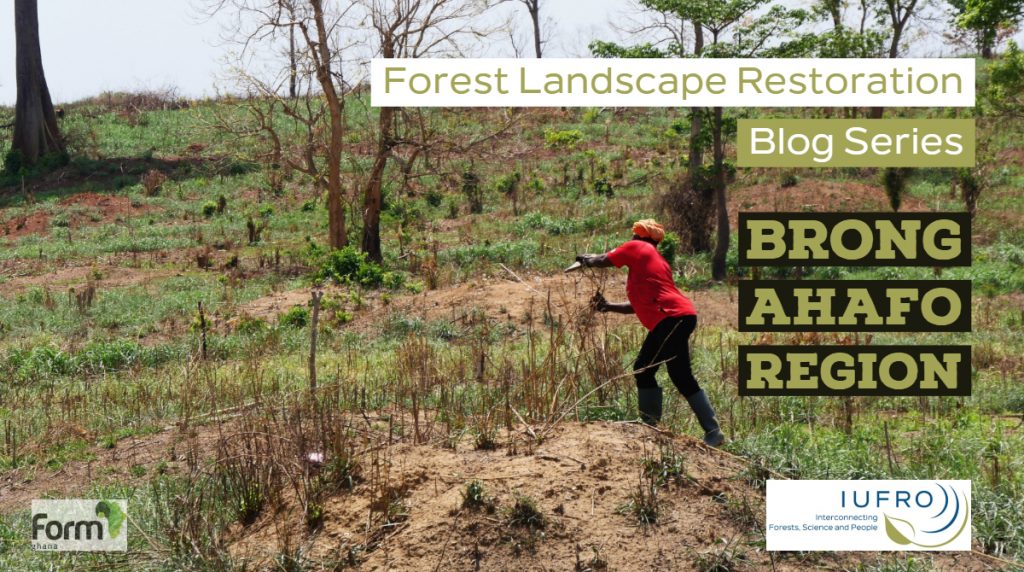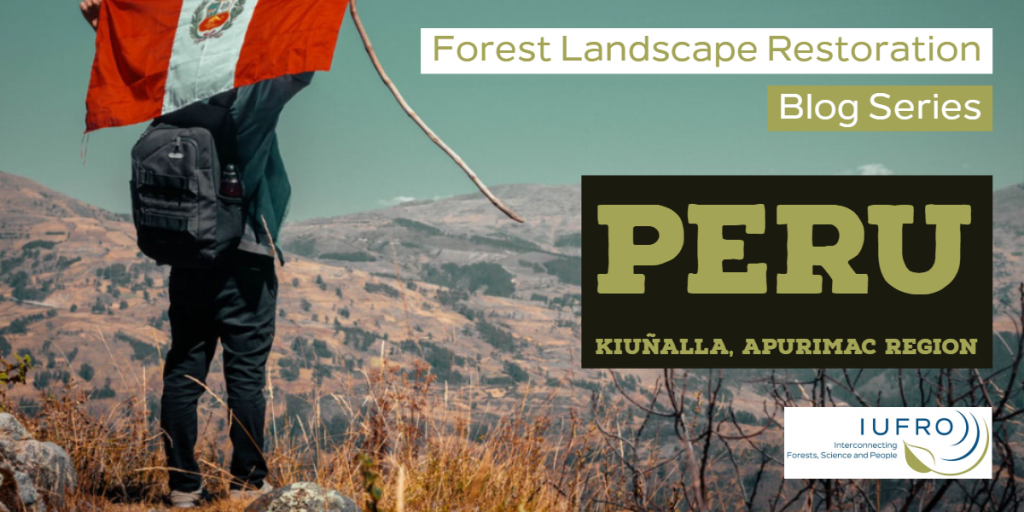Seeing the forest for the trees
Seeing the forest for the trees
Guest blog via Sri Lanka’s Ecosystem Conservation and Management Project ESCAMP; first published on Seeing the forest for the trees – ESCAMP
Forty Forest Department’s and other stakeholders participated in a training
organized and financed by International Union of Forest Research Organizations (IUFRO)
learning best restoration practices of forest landscapes

It Takes a Global Village to Plant and Manage a Trillion Trees
It Takes a Global Village to Plant and Manage a Trillion Trees
Author: Dr. John A. Stanturf
John Stanturf is a Visiting Professor at the Estonian University of Life Sciences, Tartu, Estonia, and Senior Restoration Specialist at InNovaSilva, Vejle, Denmark.
He is Deputy Coordinator of the IUFRO Task Force on “Transforming Forest Landscapes for Future Climates and Human Well-Being”.

Tree planting to combat climate change is wildly popular. Several countries and many organizations talk about planting billions or trillions of seedlings. Contrary viewpoints have also hit the popular press and scientific journals, pointing out that the need to reduce GHG emissions still remains the greatest challenge. Overlooked in many of these high profile news items is the reality that tree planting is not a simple activity; to be successful, we must plant the right trees, in the right places, at the proper time for young seedlings to prosper, grow, and eventually provide multiple benefits including biodiversity. Because it takes several decades until restored forests reach desired carbon sequestration levels, long-term management of forests and trees is key. And establishing new forests is even more complicated; successful tree planting requires planting stock grown with specific traits to meet the challenges of particular sites and the restoration objectives. Focusing only on planting ignores everything that is needed to get to the point of planting seedlings, including seed collection, processing, and nursery practices through to caring for seedlings after planting.
Ghana: communication with stakeholders helps to keep them engaged and active in forest restoration projects
Inside the forest. Wind blows. Leaves dance in synchronized movement. Joy with the result of protecting and restoring degraded forests.
“I was directly involved in the land preparation, planting, and maintenance of the trees together with crops,” said one of the female farmer participants of the forest landscape restoration (FLR) project in Ghana.

Forest Restoration: enabling environment and mobilizing stakeholder’s support in Guatemala
With the Archaeological Park and Ruins of Quirigua, a protected UNESCO World Heritage Site, and its national tree, Ceiba sp., the fifth blog post is in Guatemala. The name of the project is Chimaltenango Restoration Initiative, in Guatemala, Central Highlands.

How strong political support is helping restore forests in the Telangana state of India
Land of Taj Mahal and the second-most populous country in the world. India is the fourth country of the blog series on the Forest Landscape Restoration Implementation: Progress on the Ground.

What are the conditions for large-scale FLR success in Madagascar?
Oui, oui mon ami, we are in Madagascar, the third blog post in our FLR Snapshot series. The fourth biggest island in the world and the house of lemurs. FLR is a hot topic in the Boeny Region, which is dominated by vast flat areas below 400 m in altitude, with volcanic rocks cutting across the long plains along the coast and a dense network of rivers flowing through the landscape. Among the important networks and governance structures in the region, is the FLR committee for the Boeny region, established to connect the many FLR actors and develop a common base for knowledge sharing and capacity development.

How to obtain desired results in forest restoration through technology and cooperation
Northern Mongolia, sub-taiga forest, Tujyin nars National park, is the second blog post of the FLR Snapshot Series. The second largest landlocked country in the world, land of Mongols, with breathtaking landscapes. Tujyin Nars Reforestation Initiative was created to restore pine forest that had been deforested and degraded due to improper forest harvesting and frequent fires. It has become one of the best examples of successful forest landscape restoration of deforested and degraded forests in northern Mongolia.

Restoring for water – the basis to address forest restoration
In the first blog post of the Forest Landscape Restoration (FLR) Snapshot Series we will focus on the project Forest Landscape Restoration Initiative of the Kiuñalla Community, in the Apurimac Region. Located in the southern Andes of Peru, this region has been one of the first in initiating actions within the framework of the country’s commitment to the Bonn Challenge to restore 3.2 million hectares of degraded areas through plantations for commercial purposes as well as for the recovery of ecosystem functions.

Forest Landscape Restoration in South Asia – Sharing Best Practices
By Helinä Poutamo, IUFRO and IFSA

Community members and representatives of the Sri Lanka Forest Department share their experience with community-based agroforestry teak plantations using the taungya system–a form of agroforestry system in which short term crops are grown in the early years of the plantation of a woody perennials species in order to utilize the land, control weeds, reduce establishment costs, generate early income and stimulate the development of the woody perennials species. Photo © IUFRO 2018.
International Knowledge-Sharing Workshop “Best Practices for Implementing FLR in South Asia”
Chilaw, Sri Lanka, 15-17 August 2018
As follow-up to the 2017 consultations in India, the Ministry of Mahaweli Development and Environment, Sri Lanka, in cooperation with the International Union of Forest Research Organizations (IUFRO) organised a knowledge-sharing workshop on best practices in implementing forest landscape restoration (FLR) in South Asian countries. Around 60 experts contributed to the workshop, including partners from governmental and non-governmental institutions in Bangladesh, India, Nepal, Pakistan and Sri Lanka as well as international expert organisations of the Global Partnership on Forest and Landscape Restoration (GPFLR) such as FAO, IUCN, TROPENBOS and CIFOR.
Generous funding for the workshop was provided by the German Federal Ministry for the Environment, Nature Conservation and Nuclear Safety; The Global Environment Facility; National Institute of Forest Science, Republic of Korea; and the United States Forest Service.
